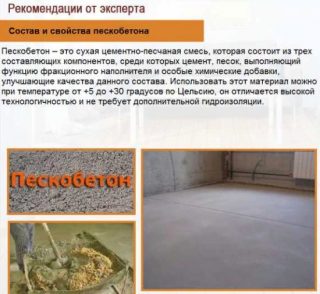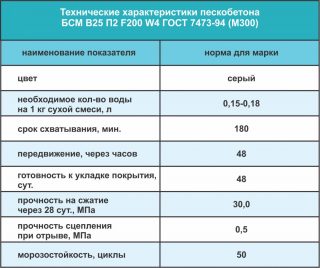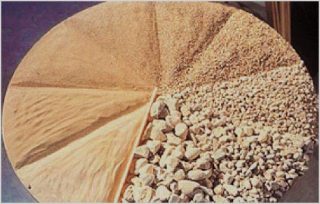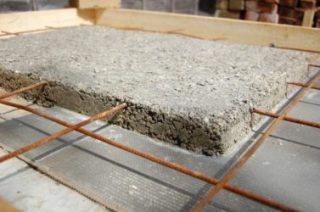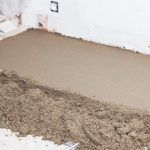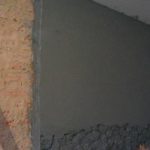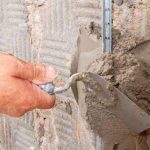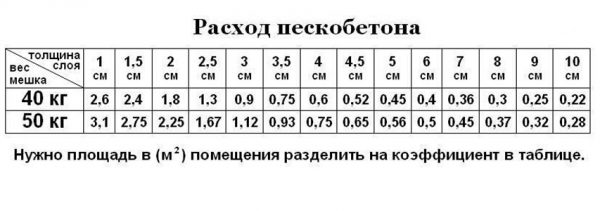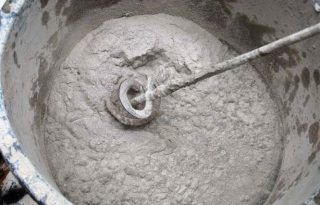Dry concrete mixes are used more and more often, since ready-made powders are convenient to use. This increases the speed of construction. Sand concrete contains a complex of carefully selected and weighed components that provide the necessary qualities during work and in the process of curing. Excellent performance is the reason for the demand among specialists.
Description and material properties
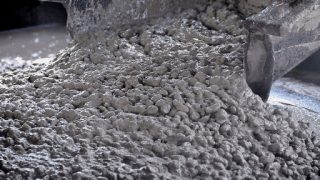
Product Features:
- the strength of finished products depends on the grade of cement;
- the degree of shrinkage is controlled by the amount of sand fraction.
Structural elements made of sand concrete withstand frost, show the standard strength for each specific group. Dry concrete mixes are more expensive compared to standard mixtures, but the builders give preference to them. Among the components there are set accelerators, additives for resistance to chemicals, insolation.
Composition and characteristics
IN dry mix composition include:
- astringent - high quality Portland cement;
- filler - river coarse sand;
- modifying additives.
Changing the required ratio leads to a decrease in quality.
- grey colour;
- adding water per 1 kg —0.15 - 0.18 l;
- solution movement and readiness for use - 48 hours;
- compressive strength at the end of strength gain (28 days) - 30 MPa;
- tensile strength from the surface - 0.5 MPa;
- withstands 50 series of freezing and thawing;
- volumetric weight 2000 - 2300 kg / m³.
There are materials containing fibers and microfibers to create a reinforcing screed.
Types of sand concrete
Description of common types of software GOST 74.73 - 1994:
- BSM V7.5 P2. Used for plaster, strength 98 - 100 kg / cm², water absorption resistance W4, sand fraction 0.8 - 1.2 mm;
- BSM V7.10 P2... They are used in the repair work of external walls, when installing floor screeds, for laying bricks, rubble. Strength - 150 - 160 kg / m², quartz and sand filler, fraction 0.8 - 2.0 mm.
Stamps BSM V7.25 P2 and BSM V7.35 P2 belong to high-strength categories. Such compositions are suitable for the construction of supporting structures, supports, columns, beams. Universal grades provide good adhesion to subsequent finishes.
Application area
Application of solutions of the middle fraction:
- plastering of external and internal walls of houses, industrial buildings, hangars, warehouses;
- installation of floor screeds as an intermediate or base layer (without finishing);
- pouring the structural components of the warm floor (mixtures with fibrous additives);
- plastering of ceilings, walls in basements, damp and damp rooms (bathrooms, kitchens, unheated terraces).
Fine-graded sand concretes do not have sufficient strength, therefore they are used in repair and restoration work. Cracks and holes are sealed with mortars, small building forms are made of them, used for laying unloaded walls (partitions).
Recommendations for use
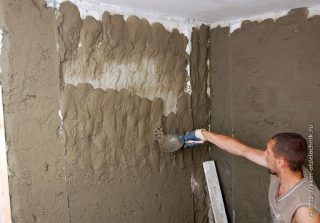
When choosing a material, pay attention to shelf life... Quality degrades over time. The surface before laying the screed, plastering is cleaned of weak layers, debris, primed with deeply penetrating or adhesive compounds.
For wall application or as a screed use methods:
- manual overlay with leveling;
- mechanical method using specialized units.
Both methods assume installation of beaconsLine the mixture by hand with a rule. For the device of monolithic bearing elements, formwork is made from boards, OSB boards, chipboard impregnated with waterproof preparations. Add to the form reinforcement cage to increase strength.

How to calculate consumption
On the packaging of sand concrete, the manufacturer indicates information about the consumption of material per square of surface with a thickness of 1 mm. Standard consumption of dry concrete mix is within 2.2 - 2.3 kg... A cube of concrete can be prepared using 2200 - 2400 kg of dry mix.
Calculation procedure:
- The square of the floor is calculated by multiplying the width and length of the room; for the walls, the perimeter of the room and the height are multiplied. The area of the window and door openings is subtracted from the area of the walls.
- The resulting value is multiplied by the material consumption, then by the average layer thickness in millimeters.

How to prepare the mixture
Fine-grained compositions can be mixed using an electric drill with a whisk. In winter, heated water is used up to a temperature of + 70 ° C. The time of using the solution depends on the composition and types of modifiers.
It is not recommended to exceed the volume of water, it is added strictly according to the instructions. Excess will deteriorate the quality, lead to delamination, large shrinkage of the mixture when solidifying.
How to store
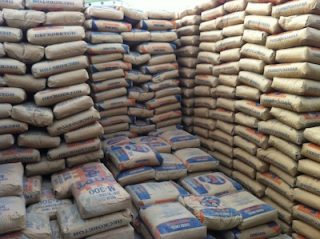
Sand concrete is packed in bags of different weight, for domestic use they take 25 - 50 kg. The container is made of multilayer paper by gluing or stitching.
Proper storage conditions:
- in a dry room (humidity not more than 50 - 60%);
- on wooden pallets in several layers so as to provide lateral ventilation;
- temperature in the warehouse + 5 ° - + 35 ° С.
Check the integrity of the bags before storage.
Under normal conditions, the mixture can be stored for six months.


